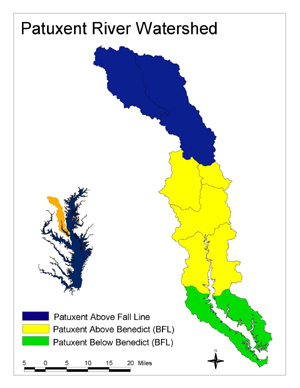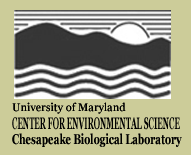Overview:
 During the last several decades, eutrophication of coastal environments has become a common phenomenon that is likely to intensify because of continued population growth along coastal margins. Loss of seagrass communities, occurrences of persistent algal blooms, development of hypoxic and anoxic conditions in deeper waters and declines in commercially and recreationally valuable species are typically associated with eutrophication. Degradation of these productive environments has stimulated the development of many monitoring and research programs designed to assess environmental conditions, detect trends and serve as a basis for implementing nutrient control programs. As a result, large amounts of descriptive and process oriented data have become available. However, much of this information has been interpreted in terms of relatively narrow issues. From these sources it is difficult to gain a broad understanding of how nutrients influence coastal systems on the one hand and how, on the other hand, estuarine dynamics influence the fate of nutrients as they are transported from the land to the sea. Larger scale analyses are needed to improve our understanding of these issues. The construction of whole ecosystem nutrient budgets provides a conceptual framework from which to gain such a perspective.
During the last several decades, eutrophication of coastal environments has become a common phenomenon that is likely to intensify because of continued population growth along coastal margins. Loss of seagrass communities, occurrences of persistent algal blooms, development of hypoxic and anoxic conditions in deeper waters and declines in commercially and recreationally valuable species are typically associated with eutrophication. Degradation of these productive environments has stimulated the development of many monitoring and research programs designed to assess environmental conditions, detect trends and serve as a basis for implementing nutrient control programs. As a result, large amounts of descriptive and process oriented data have become available. However, much of this information has been interpreted in terms of relatively narrow issues. From these sources it is difficult to gain a broad understanding of how nutrients influence coastal systems on the one hand and how, on the other hand, estuarine dynamics influence the fate of nutrients as they are transported from the land to the sea. Larger scale analyses are needed to improve our understanding of these issues. The construction of whole ecosystem nutrient budgets provides a conceptual framework from which to gain such a perspective.
Publications and Reports:
Miller, T.J., Boynton, W.R., Houde, E.D., Boicourt, W.C., Harding, L.W., Jr., Kemp, W.M., and Roman, M., 2006. Ecosystem variability and estuarine fisheries: a synthesis. Final Report to NOAA/Coastal Oceans Program. Ref. No. [UMCES] CBL 06-015.
Boynton, W.R., Hagy, J.D., Cornwell, J., Kemp, W.M., Greene, S., Owens, M., Baker, J., Larsent, R., Voinov, A., Horton, T., 2005. Nutrient budgets and management actions in the Patuxent River Estuary, Maryland. Manuscript.
Boynton, W.R., and Kemp, W.M., 2005. Nitrogen in Estuaries. In: Capone, D.G., Bronk, D.A., Mullholland, M.R., Carpenter, E.J., 2006. Nitrogen in the Marine Environment, in preparation.
Williams, M.R., Fisher, T.R., Boynton, W.R., Cerco, C.F., Kemp, W.M., Eshleman, K.N., Kim, S.-C., Hood, R.R., Fiscus, D.A., Radcliffe, G.R., 2005. An integrated modeling system for management of the Patuxent River Estuary and basin, Maryland, USA. Manuscript for International Journal of Remote Sensing.
Kemp, W.M. and Boynton, W.R., 2004. Productivity, trophic structure, and energy flow in the steady-state ecosystems of Silver Springs, Florida. Ecological Modelling 178: 43-49.
Castro, M.S., Driscoll, C.T., Jordan, T.E., Reay, W.G., and Boynton, W.R., 2003. Sources of nitrogen to estuaries in the United States. Estuaries 26(3): 803-814.
Petersen, J.E., Kemp, W.M., Bartleson, R., Boynton, W.R., Chen, C., Cornwell, J.C., Gardner, R.H., Hinkle, D.C., Houde, E.D., Malone, T.C., Mowitt, W.P., Murray, L., Sanford, L.P., Stevenson, J.C., Sundberg, K.L., Suttles, S.E., 2003. Multiscale experiments in coastal ecology: improving realism and advancing theory. Bioscience 53(12): 1181-1197.
Boynton, W.R., Hagy, J.D., Breitburg, D.L., 2001. Issues of scale in land-margin ecosystems, pp. 299-330. In: Gardner, R.H., Kemp, W.M., Kennedy, V.S., and Petersen, J.E. (Eds.). Scaling Relations in Experimental Ecology. Columbia Univ. Press, NY.
Boynton, W. R., 2000. Impact of nutrient inflows on Chesapeake Bay, pp. 23-40. In: Sharpley, A.N. (Ed.), Agriculture and Phosphorus Management: The Chesapeake Bay. Lewis Publishers, Boca Raton, FL.
Boynton, W.R. and Kemp, W.M., 2000. Influence of river flow and nutrient loads on selected ecosystem processes: a synthesis of Chesapeake Bay data, pp. 269-298. In: J.E. Hobbie (Ed.), Estuarine Science: A Synthetic Approach to Research and Practice. Island Press, Washington, D.C.
Boynton, W.R., 1997. Estuarine Ecosystem Issues on the Chesapeake Bay, pp. 71-93. In: Simpson, R.D. and Christensen, N.L., Jr. (Eds.), Ecosystem Function and Human Activities. Chapman and Hall, New York, New York.
Boynton, W.R., Boicourt, W., Brandt, S., et al., 1997. Interactions between physics and biology in the estuarine turbidity maxiumu (ETM) of Chesapeake Bay, USA. International Council for the Exploration of the Sea, CM1997/S11 Session S.
Kemp, W.M., Smith, E.M., Marvin-DiPasquale, M., and Boynton, W.R., 1997. Organic carbon balance and net ecosystem metabolism in Chesapeake Bay. MEPS 150: 229-248.
Kemp, W.M. and Boynton, W.R., 1998. Eutrophication, habitat dynamics, and trophic feedbacks: Understanding and managing coastal ecosystems. Publication from the Stockholm Water Symposium: With Rivers to the Sea: Interaction of Land Activities, Fresh Water, and Enclosed Coastal Seas. Stockholm, Sweden, 10-15 August, 1997.
Jay, D.A., Uncles, R.J., Largier, J., Geyer, W.R., Vallino, J., and Boynton, W.R., 1997. A review of recent developments in estuarine scalar flux estimation. Estuaries 20(2): 262-280.
Nixon, S.W., Ammerman, J.W., Atkinson, L.P., et al., 1996. The fate of nitrogen and phosphorus at the land-sea margin of the North Atlantic Ocean. Biogeochemistry 35: 141-180.
Backstael, N., Costanza, R., Strand, I., et al., 1995. Ecological economic modeling and valuation of ecosystems. Ecological Economics 14: 143-159.
Boynton, W.R., Garber, J.H., Summers, R., Kemp, W.M., 1995. Inputs, transformations, and transport of nitrogen and phosphorus in Chesapeake Bay and selected tributaries. Estuaries 18(1B): 285-314.
Kemp, W.M., Boynton, W.R., and Hermann, A.J., 1995. Ecosystem modeling and energy analysis of submerged aquatic vegetation in Chesapeake Bay, pp. 28-42. In: Hall, C.A.S. (ed.), Maximum Power: The Ideas and Applications of H.T. Odum. University Press of Colorado, Niwot, CO.
Kemp, W.M., Boynton, W.R., Hermann, A.J., 1994. Simulation models of an estuarine macrophyte ecosystems. In: Patten, B.C. and Jorgensen, S.E. (eds.), Complex Ecology: the part-whole relation in ecosystems.
Costanza, R., Kemp, W.M., and Boynton, W.R., 1993. Predictability, scale, and biodiversity in coastal and estuarine ecosystems: Implications for management. Ambio 22: 88-96.
Malone, T.C., Boynton, W.R., Horton, T., and Stevenson, C., 1993. Nutrient loadings to surface waters: Chesapeake Bay case study. In: Uman, M.F. (ed.), Keeping Pace with Science and Engineering. National Academy Press, Washington, D.C.
Scientific and Technical Advisory Committee (STAC) Chesapeake Bay Program, 1992. Current approaches for modeling estuarine ecosystem processes. Technical Executive Summary.
Kemp, W.M., Sampou, P., Caffrey, J., et al., 1990. Ammonium recycling versus denitrification in Chesapeake Bay sediments. Limnology and Oceanography 35: 1545-1563.
